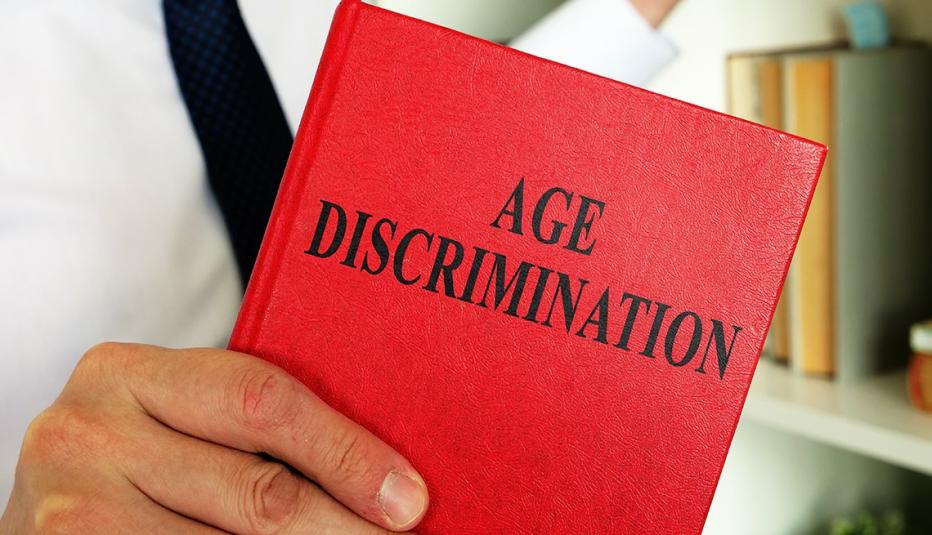AARP Hearing Center
Age discrimination is not a new phenomenon. However, fluctuations in our economy over the past couple of years have shone a light on this serious problem that affects workers age 50-plus. The Work & Jobs Data Series on age discrimination continues to explore age discrimination trends for adults age 50-plus in the labor force. Although results remain fairly consistent across all three waves, a few changes are evident.


Age discrimination continues to create obstacles to getting hired despite older job seekers being less forthcoming with age-related information.
The demand for skilled workers is providing the workforce with leverage to seek jobs with the flexibility and growth opportunities they desire. But for some workers age 50-plus, looking for a job or going through the interview process may be hindering their ability to land a job. Nearly one in six adults currently working or looking for work (14%) report that they were not hired for a job they applied for within the past two years because of their age, an increase from Wave 2 (11%). Results remain consistent among job seekers where half report that they were asked by an employer to provide their birth date during the application or interview process (Wave 1: 53%; Wave 2: 50%; Wave 3: 50%). And, data show a slow uptick in the percentage of job seekers who have been asked to provide a graduation date during the hiring process (Wave 1: 47%; Wave 2: 49%; Wave 3: 53%). However, in Waves 2 and 3, job seekers are less likely to voluntarily include the amount of time spent in previous jobs (Wave 1: 76%; Wave 2: 60%; Wave 3: 67%) and their age or date of birth (Wave 1: 49%; Wave 2: 26%; Wave 3: 34%).
Age discrimination persists in the workplace.
Research shows that about two in three adults ages 50-plus in the labor force (64%) think older workers face age discrimination in the workplace today. And among them, nearly all (90%) believe that age discrimination against older workers is common in the workplace. Both have remained consistent from Wave 1 to Wave 3. Also, just over one in ten continue to report that they have been passed up for a promotion or chance to get ahead because of their age (Wave 1: 13%; Wave 2: 12%; Wave 3: 12%).
Interestingly, the percentage of older adults in the labor force who report that in the last two years they heard negative comments in the workplace either about an older co-worker's age (Wave 1: 32%; Wave 2: 23%; Wave 3: 25%) or about their own age (Wave 1: 17%; Wave 2: 12%; Wave 3: 14%) has decreased following the first wave.
Most turn to friends or family when experiencing age discrimination.
One in five adults 50-plus (21%) report that they have experienced age discrimination since turning 40 years old. Respondents are more likely to talk with friends or family than a coworker, supervisor, or Human Resources when experiencing age discrimination. Among those age 50-plus who were not hired for a job because of their age, respondents were more than three times as likely to talk with a friend or family member (25%) versus a coworker (7%) or supervisor (3%). For those who did not take any action (i.e., talk with someone or make a formal complaint), the main reason was that they didn't think it would make a difference.
The survey reveals strong support for change with more than four in five adults age 50-plus (86%) agreeing that older Americans should be protected from age discrimination. In addition, nine in ten (90%) support (with about half saying strongly support) efforts to strengthen the nation's age discrimination laws.
Methodology
Wave 1: Interviews were conducted in three waves: March 24–28, 2022, April 22–26, 2022, and May 19–23, 2022, among 2,945 U.S. adults ages 50-plus in the Foresight 50+ Omnibus. This included 1,340 who were in the labor force (i.e., either working or looking for work). Interviews were conducted online and via phone. All data are weighted by age, sex, education, race/ethnicity, region, and AARP membership.
Wave 2: Interviews were conducted November 11–14, 2022, December 8–12, 2022, and January 19–23, 2023, among 1,455 U.S. adults ages 50-plus in the labor force (i.e., working or looking for work) in the Foresight 50+ Omnibus. Interviews were conducted online and via phone. All data are weighted by age, sex, education, race/ethnicity, region, and AARP membership.
Wave 3: Interviews were conducted August 17–21, 2023, September 15–18, 2023, and October 12–16, 2023, among 1,422 U.S. adults ages 50-plus in the labor force (i.e., working or looking for work) in the Foresight 50+ Omnibus. Interviews were conducted online and via phone. All data are weighted by age, sex, education, race/ethnicity, region, and AARP membership.
Foresight 50+
Funded and operated by NORC at the University of Chicago, Foresight 50+ is a probability-based panel designed to be representative of the U.S. household population age 50 or older. Interviews were conducted online and via phone. All data are weighted by age, sex, education, race/ethnicity, region, and AARP membership.
For more information about this survey, please contact Lona Choi-Allum at lallum@aarp.org. For media inquiries, contact External Relations at media@aarp.org.



































































